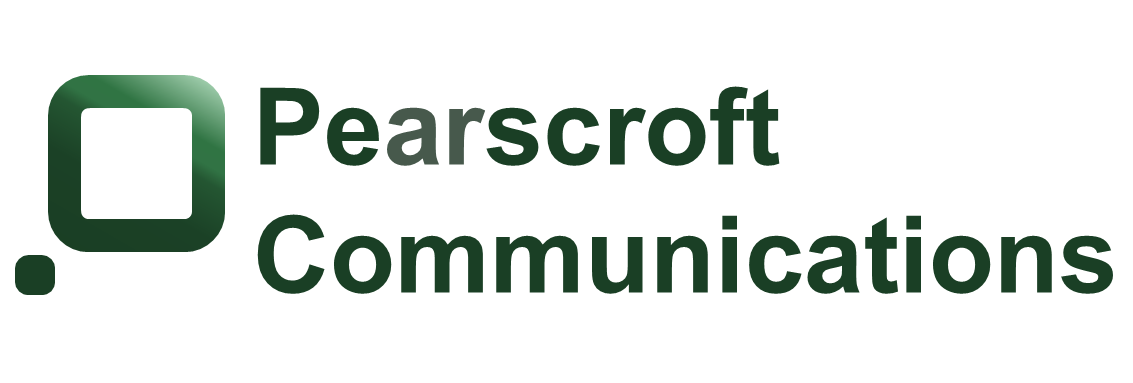
Pearscroft Communications

At Pearscroft Communications, we believe the key to effective corporate communication lies in crafting the right message and getting it in front of key decision makers. Whether you need to communicate with the media, your customers, or internal stakeholders, we can help you craft the right message and deliver it in the most effective way possible.

Penned by Christopher Zahn for Pearscroft Communications
Christopher Zahn
Managing Director
christopher@pearscroftcommunications
It’s often been said that the PR industry is not good at doing its own PR. Paradoxically, part of the challenge for a PR practitioner is “pitching” the inherent value of PR to new clients or indeed anyone not employed in a communications capacity. When doing so, it’s commonplace to come across widely held misconceptions about the industry. Let’s delve deeper into the most common myths we’ve come across:
PR Stands for Press Release
Drafting and disseminating a press release is a hugely important part of the PR process, it’s true. But’s that’s only one piece in a much wider jigsaw puzzle. Formulating official corporate messaging and collateral, having the wherewithal to identify and pinpoint relevant industry trends, knowing which reporters and publications to stoke relationships with… This is all before developing material that resonates with the media and target audiences. We’re still only scratching the surface here but already we can see the vast array of tools a good PR practitioner has up their sleeve to execute a campaign and manage a client’s reputation. Press releases are only one many examples of public amplification.
PR is Only for Large Companies with Big Budgets
A common misconception we see all too often in the PR industry is the perception that PR is a luxury, rather than a necessity. Nothing could be further from the truth. To quote the great Bill Gates, “If I was down to my last dollar, I would spend it on PR.” To this end, the success of your PR efforts is not down to the amount of money invested in campaigns, it’s about selecting and executing the most appropriate strategy for your messaging, and budget is a key consideration. Clients can opt for a total corporate communications overhaul or something as simple as providing written commentary on a relevant industry trend to raise awareness in a credible way. Regardless of your budget, it’s always possible to achieve valuable results.
All Publicity is Good Publicity
Ah, this old chestnut! An oft-overused phrase, when thrown about, makes publicists and PR practitioners shake their heads in dismay. Was this true, there would be no such thing as a catastrophic PR stunt. Negative publicity can do propound damage to a brand or individual’s public image, and this often results from the lack of informed PR advice. If a crisis does arise, the value of your PR’s relationship with journalists and reporters comes into its own and mitigating the damage often comes from the strength of relationships held with the media.
It Takes Too Long for PR Efforts to Achieve Meaningful Results
Realising the results of a PR activity can be as fast or slow as it needs to be. Given the often unpredictable nature of PR and its reliance on the news cycles, delivering client results can come within a 24 hour period, as with rapid response outreach, or is months in the making, as with a more complex communications campaign. A good PR practitioner will leverage their knowledge of news cycles as well as their relationships with the media to advise on the most strategic timelines for a campaign to deliver the best results.
PR Doesn’t Produce Sufficient ROI
It’s accurate that PR is not a transactional activity that can be measured as such, as with straightforward advertising efforts. However, that doesn’t mean that PR cannot be quantified for success in the same way as other marketing functions. It differs from business to business but typically success and effectiveness would be measured against pre-determined KPIs that have inbuilt metrics measuring unique monthly visitors, circulation, sentiment and relationship building with that particular outlet or reporter.
Only Tier One Coverage Means Anything
Finally, a common myth that gets banded about far too often. PR is ultimately a frequency medium, meaning that media coverage leads to media coverage. Getting you or your brand’s name on the radar of the media means it’s far more likely to land more prestigious coverage. On the other side of the same coin, media coverage should be targeted to reach and engage with your target audience, meaning a specific industry trade is just as valuable as the coveted, tier one hit. The key is to create a steady drumbeat of activity with relevant industry publications, bridging the delta between coverage to achieve the sweet spot of reach and frequency.
To learn more about how PR can help manage your corporate reputation, get in touch with us at [email protected]
